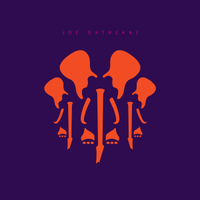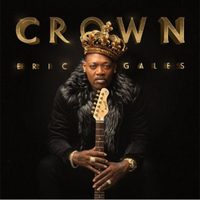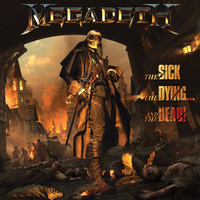The 10 best guitar solos of 2022
As voted for by you, and featuring the lead guitar skills of Nita Strauss, Sophie Lloyd, John Frusciante, Polyphia, Steve Vai and more, here are the solos that lit up your year
![[L-R] Nita Strauss, Steve Vai, Sophie Lloyd and John Frusciante](https://cdn.mos.cms.futurecdn.net/MemeGKgQM5wMmvBNVtvu6M.jpg)
What can the greatest guitar solos of the year tell us about the business of playing the guitar? Well, in one sense, this annual democratic endeavor reveals a lot about where lead guitar is going technically.
Once upon a time, some people were saying the guitar solo is dead, and yet here we are in 2022, in an era when individual virtuosity has never been more spectacular – and not just on social media, which has been an accelerant for neo-shred styles. Players are doing what they have always done, standing upon the shoulders of giants, in search of new techniques, new sounds, but also, more to the point, in search of themselves.
After all, that’s all technique is: a means to an end, a mode of expression. Once we look past the technique, we’ll find that the solos here all serve different purposes. They’re all telling different stories. That is what Chris Buck is doing with Cardinal Black’s Warm Love – we describe it as a journey, and it is, but it’s a narrative. It’s the same for Erja Lyytinen, whose meticulous intonation evokes the blues-rock greats, and for Slash, whose lyrical style is evergreen.
Take Eddie, from Red Hot Chili Peppers’ returning guitarist John Frusciante, a player of great gifts, not least his discipline, knowing when to temper his brilliance and when not to. Eddie, written in tribute to Eddie Van Halen, somehow does both, allowing him a bona-fide guitar hero moment that nonetheless has the good grace to not pull focus away from what Flea is doing on bass – a bassline like he is talking to Frusciante as he scales a rock face, telling him where to place his feet.
Others are the story, like how Steve Vai and Ibanez teamed up for one of electric guitar’s most bonkers, most intriguing creations, and the sound that he could get out of it. Or like when Steve Vai answered an email from two guys from Austin, TX.
And others act as all lead playing does – whether it’s clarinet, oboe, violin or a Les Paul – it acts as a power-up, changing the energy of the song, using all of the above, the sense of narrative, an exploration of technique and what’s possible, for a musical set piece that gets people out of their seats. And that’s why people play guitar.
10. Erja Lyytinen – Bad Seed
The first single taken from the Finnish blues-rock phenomenon’s latest studio album, Waiting For The Daylight, features a solo that will stop you in your tracks should you be laboring under the impression that Lyytinen’s style is all about the slide, and strictly blues as manifested by all those 5s, 7s, and 8s on the tablature notation.
Get The Pick Newsletter
All the latest guitar news, interviews, lessons, reviews, deals and more, direct to your inbox!
This is the aggressive expansion of blues-rock’s melodic perimeter fence, as though Lyytinen is following in Gary Moore’s footsteps, chasing down big moonlit minor key melodies with her lead playing, digging into her two years getting musically booksmart at the conservatory, intonation on point, for a solo that effectively tells the story of the song without words.
9. Red Hot Chili Peppers – Eddie
RHCP’s big, massive and prolific 2022 was lit up with guitar highlights from returning guitarist John Frusciante. It wasn’t so much 365 days spent orbiting the sun as an outpouring – two albums, stadium tours, and a track that saluted the late Eddie Van Halen.
Taken from the Los Angeles superstars' second album of the year, Return of the Dream Canteen (where is this canteen, does it take reservations?), Eddie is not the sound of Frusciante with a modded Strat, a Marshall stack and a Variac in search of Eruption II, but in a sense it is the sound of Frusciante placing himself in that zone.
It opens with him at his most yowling, quasi-Hendrix fuzz, with the solo all the more impactful for sharing the mix with Flea’s peripatetic and propulsive eighth-note bassline. But as Eddie works towards a conclusion you ask yourself, ‘Is he going to go full-shred? He’s not.’ He did, kind of.
EDITOR’S PICK: Joe Satriani – Sahara
Fellow melodic king Nick Johnston nominated the keyboard/guitar duels of Sailing the Seas of Ganymede for the crown this year, and it was narrowly pipped to the post. But we’re giving props to the leadoff track from Satriani’s new opus here, which saw the godfather of shred tear up the rulebook he’d been writing for his past few records as he turned to plugins for his tones, and ultimately produced his best album in decades. Sahara’s first solo is Satch at his most gloriously understated, channeling David Gilmour with a crystalline tone, followed by an Engines of Creation-style liquid legato lead further down the line. Both solos are understated and melodic, and break new ground for the virtuoso. After nearly four decades of recorded output, Satch still has the ability to surprise. – Michael Astley-Brown
8. Slash – Fill My World (feat. Myles Kennedy and the Conspirators)
There is a case to be made that says 4 is the most Guns N’ Roses album Slash and Myles Kennedy have recorded together with their band of Conspirators. It has a sleazy grit to it, like an oyster recovered from the gutter on Sunset, a sense of animalism that is hard to put into a rock ’n’ roll record in the 21st century because contemporary audiences have long been deflowered; they’re inured to this kind of thing.
That the band were allowed to track it live – a long-held aspiration of Slash’s – was critical. There’s even something a little Sweet Child O’ Mine about the Fill My World, right there in that opening riff. But then Slash’s phrasing is always going to betray his latent appetite for destruction, right there in the controlled chaos, in the trebly clang of his Les Paul into Marshall head. Here, as ever, he proves that there’s no-one better at balancing noble melodic intent with rock’s devil-may-care fatalism.
7. Ghost – Griftwood
Sadly not a bold theater-metal cover of Scottish indie wets Travis’s Driftwood, this is kind of something else, subversive with its bash-the-bishop anti-religious pomp, and it plays out a little like Ain’t Talkin’ ‘Bout Love as reimagined for the Eurovision market.
It’s like they’ve turned black metal marshmallow pink. From the gussied up production to its redoubtable structure and pop dynamics, Griftwood is really is a masterclass in formal discipline, and of course a composition like this demands a big solo and a 2,000-watt spotlight to shine on it.
The anonymity of the Nameless Ghouls must make for an HR nightmare and streaming platforms must spend much of your subscription fees on designing the algorithm to administer royalties (no laughing at the back) to these cats, but it also makes adjudicating this style all that more difficult. Could it be Phil Collen in black robes and face mask? Is Vitto Bratta leading a double life? We’ll never know, but the solo rips all the same. La Suède, Douze points!
EDITOR'S PICK: Lari Basilio – Your Love
Part of what makes a good guitarist a great one is their feel, phrasing and ability to navigate the fretboard with melodic ease. When it comes down to this, Lari Basilio truly is one of today’s best. Sure, her technique is pinpoint and her tone is to die for, but what elevates her status is her ability to weave together vocal-like licks and gorgeous waterfalls of six-string magic with hypnotic accuracy. Your Love is pure Basilio – an exhibition of her soloing prowess and a masterclass in phrasing. – Matt Owen
6. Nita Strauss – The Wolf You Feed (feat. Alissa White-Gluz)
Oh, so this is why they call her Hurricane Nita… Wowzers. With Nita Strauss’s 2022 was dominated by the headlines surrounding her departure from Alice Cooper’s touring band and joining up with pop superstar Demi Lovato, there was a risk her profile as a solo artist would fly under the radar.
But then Strauss had the good sense to hedge against this, drafting Alissa White-Gluz from Arch Enemy for some serious vocals – a collaboration she had been wanting to do forever – and firing out a work of anthemic up-tempo metal that could not be complete until she’d turned the strings on her Ibanez JIVAX2 signature guitar molten.
The Wolf You Feed was the second of two singles that will feature on her upcoming solo album, with the followup to 2018’s Controlled Chaos expected some time in early 2023. It is sure to be one of the guitar spectaculars of the year.
5. Alter Bridge – Pawns & Kings
Having ran away with the Palme d’Or for best riff of 2022, with Silver Tongue winning by a landscape, Myles Kennedy and Mark Tremonti return to chart highly once more for his unique abilities to gently melt the face. There’s something about the way those players just tease the notes off the fingerboard, with Pawns & Kings sounding like the divination of some sacred metal they have discovered while backpacking across the Sinai Peninsula.
The solo here is anticipated by an off-kilter legato shred-a-doodle that is more hyper-rhythm than lead, but when it arrives – complete with that high-end electric guitar tone courtesy of Paul Reed Smith’s R&D department – it is a stop-and-rewind moment.
It's also an invitation for all the young Tremontis to get their game faces on, retreat to the practice space, to try all the guitar picks at their disposal – maybe even all at once – and work on phrasing and those super-fluid transitions that Tremonti and Kennedy so insouciantly perform like a master maître d’ preparing his 10,000th Crêpes Suzette. Indeed, this is what 10,000 hours sounds like.
EDITOR'S PICK: Eric Gales – You Don't Know The Blues
One of the highlights from the Memphis native’s sterling, Joe Bonamassa-produced 2022 album, Crown, You Don't Know The Blues is the genre in its purest, most powerful form. Right after the second chorus, Gales slides right on into a show-stopping minute-long break that has it all – his blink-and-you-miss-it speed, piercing vibrato, impeccable phrasing, and, through all the solo’s fiery twists and turns, the brilliant instincts that allow him to land perfectly on his feet just in time for the third verse. – Jackson Maxwell
4. Cardinal Black – Warm Love
Chris Buck revs up his Goldtop Revstar to give Warm Love the warmth and the love that a soulful blues-rock track a decade in the making deserves. And it requires a fingerstyle approach to tease out all the dynamics. We’re assuming, or rather calling the live session version as definitive, because that’s where Buck really stretches out and perches his guitar where Tom Hollister’s vocals were just a minute before.
Using a wah pedal as an occasional filter, no doubt with some space added from a Dawner Prince Boonar, and then just seizing the improvisational initiative to take the solo from Point A through the scenic route to arrive at Point B in one piece.
Though with a solo such as this, you don’t want the tension of thinking it’s all going to come crashing down; the tension here is how high he might take it. Well, 2022 was quite the year for Cardinal Black: Buck took this all the way to the Royal Albert Hall.
3. Steve Vai – Teeth of the Hydra
Steve Vai’s playing has outgrown the guitar. We have long suspected it. The clues were there: the accumulation of the double-necked electrics, the playing one-handed while recovering from surgery, all to keep things interesting and find new avenues for musical exploration. And now this: the best, the Ibanez Hydra, the triple-necked steam-punk custom build that inspired this ripping, not-of-this-Earth instrumental.
Anyone who has put in the hours working on their Travis picking will particularly appreciate Vai’s separation of various parts of his brain, as though head, shoulders, knees and toes can all act independently of each other, answering to their own metronome.
That Teeth of the Hydra is technically audacious goes without saying – it is a man playing a guitar with three necks – but it somehow encapsulates what an instrument like this should sound like, an instrument so cumbersome it needs to be on a stand, one that has its own theme song. We look forward to hearing a sequel.
EDITOR'S PICK: Megadeth – We’ll Be Back
The first single from Megadeth’s highly anticipated 16th studio album The Sick, The Dying… and The Dead! brought with it a bona-fide onslaught of screeching metal and laser-precise, machine-gun-esque alternate-picked guitar riffs – complete, naturally, with a brutal military-themed music video. But the real firepower in We’ll Be Back lies within the ever-formidable lead playing chops of the band’s two axemen, Kiko Loureiro and Dave Mustaine. Across its four-and-a-half minute runtime sits an unbridled bounty of fretboard fireworks, but Kiko’s second solo, with its lightning-fast alternate picking, head-spinning two-handed tapping and rapid legato slides, is worthy, in our book, of the six-string Medal of Honor. – Sam Roche
2. Sophie Lloyd – Do or Die
Sophie Lloyd made her name by adapting tracks from across the length and breadth of the pop-culture firmament for shred guitar, and it turns out this gambit endows her with all the chops necessary to, y’know, just go out and tear it up as Machine Gun Kelly’s stunt guitarist, or to take on the big projects such as corralling her favorite singers into the studio – a power move inspired by Slash, who did something similar with his solo work – for an all-star album.
Do Or Die is taken from her forthcoming solo album, Imposter Syndrome, which will be released in 2023, and features Nathan James on vocals. James, frontman of Inglorious, will thank you for not fast-forwarding the YouTube video to watch Lloyd set her Kiesel ablaze, but understands if you did.
1. Polyphia – Ego Death (feat. Steve Vai)
It had to be Ego Death. Just doing the arithmetic on the personnel involved would have led most to the conclusion that no other solo could compete. Here we have Steve Vai lighting up his Ibanez PIA with Scott LePage and Tim Henson holding down the rhythm.
With 8.8 million views on the Polyphia YouTube page, a second Top 10 finish for Steve Vai, and one of the most audacious moments on an album that in years to come might well become a byword for audacity, Ego Death is an early contender for the ne plus ultra of 21st-century guitar instrumentals.
It is the sound of the master who never let himself lose his sense of radicalism stretching out to offer Tim Henson and Scott LePage a solo that is quintessentially Vai: virtuosic but playful, tricksy but melodic, and a perfect fit for the Polyphia aesthetic of pristine genius.
As Vai explained when he sat down with Henson, LePage and Guitar World, his playing on Ego Death was his gift for Polyphia to do with what they say fit. That meant cutting it up, as they often do, splicing instrumentation together, and taking a non-linear approach to writing and composition much in the way a hip-hop producer might.
“I wanted them to do it. It didn’t really matter – it’s not sacred,” Vai said. “It was chopped in a way that met their creativity demands, and I wouldn’t want them to do anything else. When I first heard it, though, it was so different. I thought, ‘Maybe they didn’t like what I did!’”
Oh, they did. Just listen to it. It’s perfect.
Jonathan Horsley has been writing about guitars since 2005, playing them since 1990, and regularly contributes to publications including Guitar World, MusicRadar and Total Guitar. He uses Jazz III nylon picks, 10s during the week, 9s at the weekend, and shamefully still struggles with rhythm figure one of Van Halen’s Panama.
“I suppose I felt that I deserved it for the amount of seriousness that I’d put into it. My head was huge!” “Clapton is God” graffiti made him a guitar legend when he was barely 20 – he says he was far from uncomfortable with the adulation at the time
“I was in a frenzy about it being trapped and burnt up. I knew I'd never be able to replace it”: After being pulled from the wreckage of a car crash, John Sykes ran back to his burning vehicle to save his beloved '76 Les Paul














